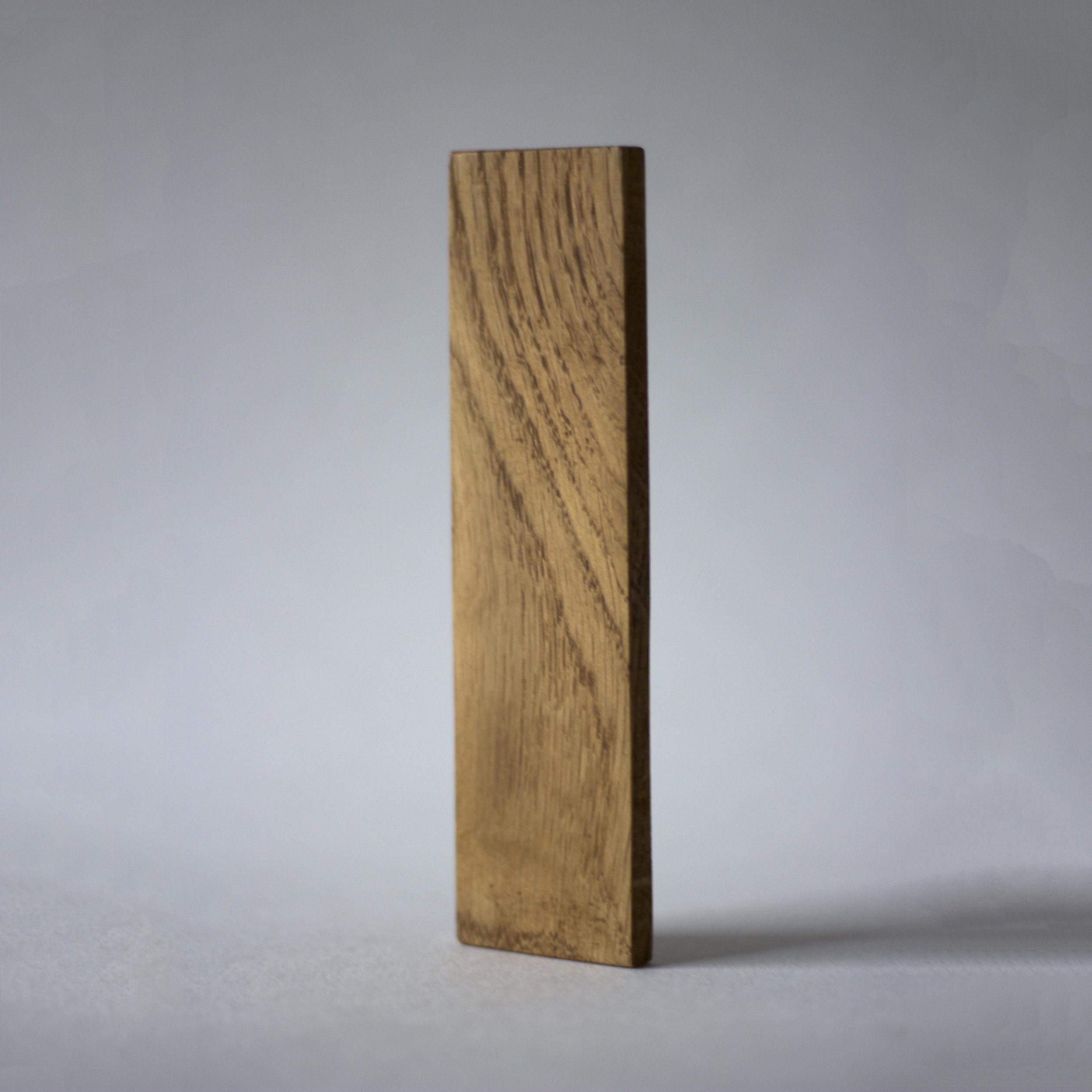The types of wood, combined with various treatments, are the most commonly used choice. I am constantly researching new combinations of wood and their treatments.
Oak
Quercus alba
White Oak is strong, beautiful, rot-resistant, easy-to-work, and economical, representing an exceptional value to woodworkers. It’s no wonder that the wood is so widely used in cabinet and furniture making.
Finish possibilities: HLS stain
Rustical Oak
Quercus alba + Stain
White Oak is strong, beautiful, rot-resistant, easy-to-work, and economical, representing an exceptional value to woodworkers. It’s no wonder that the wood is so widely used in cabinet and furniture making.
Finish possibilities: Oil / HLS stain / Color stain
Stained Oak
Quercus alba
White Oak is strong, beautiful, rot-resistant, easy-to-work, and economical, representing an exceptional value to woodworkers. It’s no wonder that the wood is so widely used in cabinet and furniture making.
Finish possibilities: Color stain
European Walnut
Juglans regia
Typically easy to work provided the grain is straight and regular. Planer tearout can sometimes be a problem when surfacing pieces with irregular or figured grain. Glues, stains, and finishes well, (though walnut is rarely stained).
Finish possibilities: Oil / HLS stain
American Walnut
Juglans nigra
Typically easy to work provided the grain is straight and regular. Planer tearout can sometimes be a problem when surfacing pieces with irregular or figured grain. Glues, stains, and finishes well, (though walnut is rarely stained). Responds well to steam bending.
Finish possibilities: Oil / HLS stain / Color stain
Iroko
Milicia excelsa
Given the high prices of genuine Teak, Iroko could be considered a low-cost alternative. The wood is stable, durable, and has an overall look that somewhat resembles Teak.
Finish possibilities: Oil / HLS stain
Sapelli
Entandrophragma cylindricum
Sapele is a commonly exported and economically important African wood species. It’s sold both in lumber and veneer form. It is occasionally used as a substitute for Genuine Mahogany, and is sometimes referred to as “Sapele Mahogany.” Technically, the two genera that are commonly associated with mahogany are Swietenia and Khaya, while Sapele is in the Entandrophragma genus, but all three are included in the broader Meliaceae family, so comparisons to true mahogany may not be too far fetched.
Finish possibilities: Oil / HLS stain
Khaya
Khaya anthotheca
“Comprised of a handful of species from the Khaya genus, all of which are native to Africa. Sometimes lacks the deeper reddish brown color and durability that is common for true mahogany in the Swietenia genus. Botanically, Khaya is a part of the Meliaceæ family, which not only includes mahoganies, but also Sapele (Entandrophragma cylindricum), and a host of other commercial species. Considered to be a valid substitute for Honduran Mahogany (Swietenia macrophylla), otherwise known as “Genuine Mahogany.”.
Finish possibilities: Oil / HLS stain
Teak
Tectona grandis
“Sometimes called Burmese Teak, this name is used to differentiate natural-grown trees (typically from Myanmar, aka Burma) from Teak grown on plantations. Used extensively in India and within its natural range for centuries, Teak has grown into a worldwide favorite. With its superb stability, good strength properties, easy workability—and most of all, its outstanding resistance to decay and rot—it’s no wonder that Teak ranks among the most desired lumbers in the world.”
Finish possibilities: Oil / HLS stain









